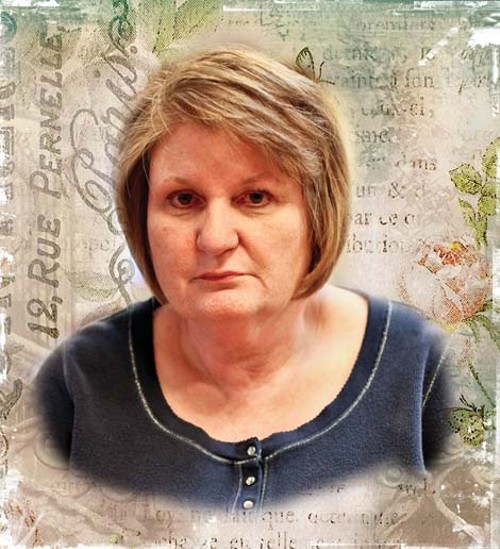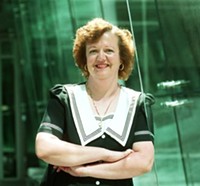Page 2 of 3
No Good Deed Goes Unpunished
Division of Child & Family Services statewide adoption specialist Marty Shannon says that in 2010, of the 609 adoptions that DCFS facilitated, only five babies were drug-exposed or had fetal-alcohol syndrome and were adopted by single women (three of whom were related to the babies). “Very few children come back into state custody from a prior adoption,” she says. “The children who come back into custody from an adoption are no longer infants, and there could be many life factors that could play into the reason they come into DCFS custody.”
Utah Department of Human Services public information officer Elizabeth Sollis says that permanency is always the goal of DCFS. “It is extremely unfortunate for a child and the family when the child returns to state custody, regardless of the reason,” she says. “We are sensitive to these issues and work to ensure the child has what is needed to minimize and deal with any trauma associated with such circumstances.”
Every child is unique, she says, and most parents know what is going on with the children they adopt. “Some children have more or greater medical or mental-health needs, and these needs are discussed with each adoptive family prior to the actual adoption,” she says, “[but] it is difficult to predict long-term medical or mental-health needs.”
Adoption attorney Ellis stresses that Speake was an ideal candidate to adopt. “Rusty does a great job in a very difficult situation. She has a good job and makes a good income. She is nurse who has specialized training in medical problems that might arise. And she is so dedicated to her children’s needs. When Emily needed care that was only available in Texas, Rusty quit a job she had had for a long time and moved to Texas, just to get the care that Emily needed. When the treatment was complete, she moved back.”
He adds that Speake recently held the position of managing respiratory therapist at her work, making more money and working more hours than usual. “She made the choice to give up that job just because of the number of hours it required. Besides making visits to Emily, her two sons attend a charter school that requires her to commit to volunteer hours there. She had to take a substantial pay cut because she wanted to do the best job she could as a parent.”
Her sacrifices must have counted for something because, Ellis said, “When we got to court, we learned that the state was not seeking a finding of abandonment against Rusty. Emily remains in state custody because her condition makes her ‘dependent.’ ”
Ellis explains that Speake’s current status is that she is still Emily’s mother and, while the state has legal custody, Speake is entitled to be involved in the teams that make decisions about Emily’s care and treatment, even though up until Feb. 16, that hadn’t happened. Speake is statutorily required to maintain health insurance for Emily and also pay child support to the state while Emily is in state custody.
A logjam broke loose recently. While DCFS declined to release case-specific information about Speake’s daughter’s case to City Weekly citing privacy issues, on Feb. 16, the day after City Weekly submitted questions to DCFS, Speake began receiving e-mails from DCFS. One e-mail from a DCFS foster-care worker said Speake was partially to blame for not being involved in Emily’s care, reminding her that she missed a meeting in September 2010 as well as subsequent team meetings due to a series of scheduling conflicts.
Also on Feb. 16, Speake received a copy of a Treatment and Service Plan for Emily dated Sept. 27, 2010. The last page is the Treatment Plan Review Team Meeting Signature Sheet, signed by several people and dated Sept. 27, 2010. “I don’t believe I was invited to any meeting on 9-27-10,” Speake says. She also received a page of handwritten notes from a Jan. 27, 2011, meeting that she was not invited to attend. She also received an eight-page behavioral plan with an in-service date of Oct. 5, 2010; however, the bottom of each page is dated Feb. 16, 2011, the day after City Weekly submitted questions to DCFS.
Wrong on So Many Levels
These days, Speake visits Emily once or twice weekly, driving from their family home in Midway to Emily’s foster home in West Valley City. “We go eat, go to movies and go shopping. She is always really happy to see me,” says Speake. Emily is not allowed to visit with her brothers, which requires Speake to make other arrangements for them when she travels the 103 miles per visit. “I don’t have the boys with me, so she gets all of my time and attention.”
Speake does not like to complain about Emily’s status as a ward of the state but does admit to feeling frustrated that Emily has seen a therapist only three times in nearly six months of state custody. “Emily was receiving weekly therapy at Valley Mental Health in Park City when she was in my home,” she says. “UNI told me that Emily needed daily intense therapy, and weekly therapy was not enough. How are three therapy sessions in almost six months going to help her?”
Although she pays child support, Speake also continues to buy her items that she feels Emily needs, such as jeans and socks. Sometimes when Speake visits, she notices that Emily’s hair is dirty. Speake feels that her foster mom doesn’t want to risk one of her meltdowns and therefore doesn’t insist that Emily wash her hair.
In a recent letter to DCFS, Speake requested a different foster home. “I don’t want to make it worse for Emily, but the bottom line is, sometimes I don’t even feel that she is getting some of the basic care she needs. Nobody else is as vested in her as I am.”
During a recent visit with her mom, Emily agreed to speak with City Weekly. She said she understood she is living away from home because of hitting her brothers. “They make me mad and they are annoying. I don’t like talking about it,” she says.
She attends fifth grade in public school, although due to myriad learning disabilities, “the bulk of her classes are resource classes, most at about a third-grade level,” says Speake. Emily appears to get along OK with her classmates and has not exhibited violent behavior toward any children other than her brothers. At her new foster home, most of the children are grown, but a 15-year-old daughter lives there.
Emily says she misses her cat, Kassidy, and her old school. She says that her foster mother sometimes yells at her and once called the police on her. She says she wants to come home and sleep over at Speake’s house. Near the end of the interview, Emily asked her mom, “Why don’t you believe me instead of my brother?” referring to the bicycle-throwing incident.
After Emily left the table, Speake clarified that the question revealed that Emily still denies her responsibility in the bike incident. Speake continues to hope that Emily will soon receive the residential therapy that she needs. “Why won’t [the state] provide the services for her, in my custody, rather than having to put her back into state custody? Now that I have to do this, I am adding issues to a kid that already has issues.”
Speake says she realizes that the state “is not going to be happy with me” for comments made in this article because she knows the state’s position is that adopted children are exactly like natural children in terms of parents’ responsibility. Even though the state makes a good effort to inform parents that kids could have a lot of issues, “the real issue for me is that they make it sound like there will always be support, post-adopt services, in-home services, therapy and respite. Those things don’t exist right now and weren’t available for me.
“I don’t deny my responsibility to Emily and did not want to have to place her back in state custody. I had no other way to get her help,” she says. “How is it in Emily’s best interest to be placed in state custody?” She concludes, “This is just wrong on so many levels.”
More by Carolyn Campbell
-
Dating counselors help singles move past relationship hiccups and get to the next date.
Looking for Love
- Feb 7, 2024
-
How DNA experts and law enforcement uncover hidden identities.
Written in Bone
- Jan 24, 2024
-
City Weekly's year-end guide to getting through the holidays and closing out those Christmas lists.
Gift Guide 2023
- Dec 6, 2023
- More »
Latest in Cover Story
Readers also liked…
-
Forget the family pedigree—Robert F. Kennedy Jr should not be the next president of the United States
Trojan Horse
- Jun 21, 2023
-
Women decry harassment and toxic culture at St. George auto dealership
Men at Work
- Oct 11, 2023





